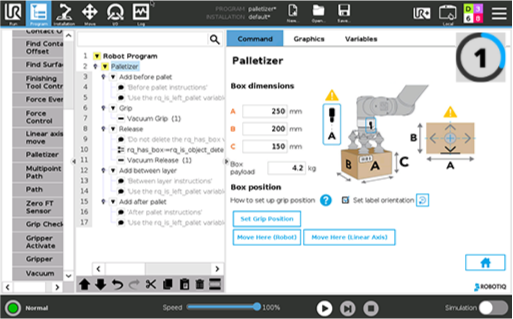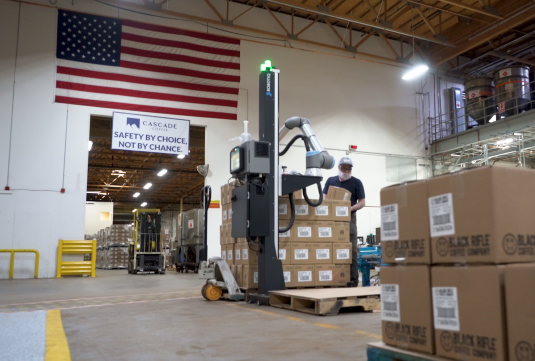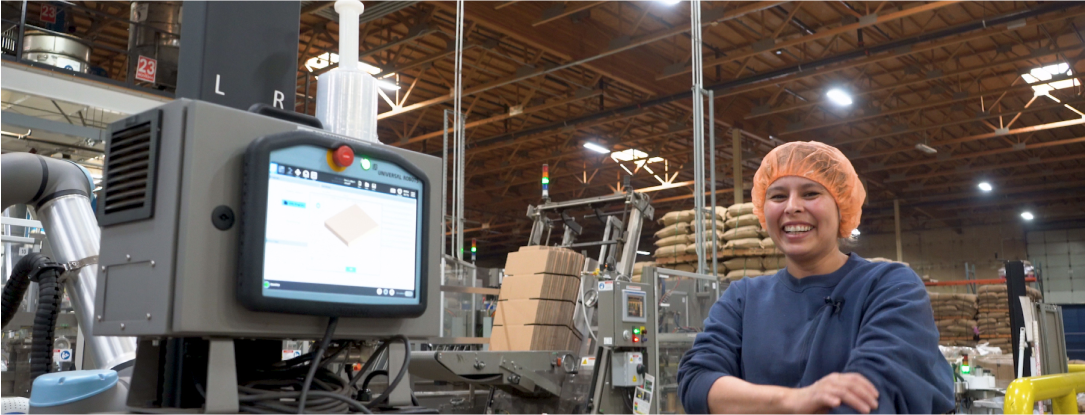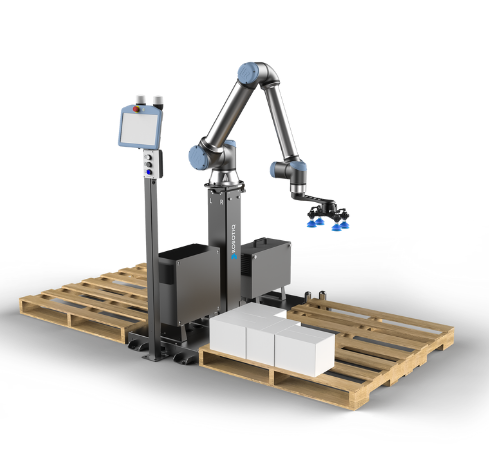-1.jpg?width=1779&height=1000&name=Robotiq%20Background%20(Cascade%20Coffee)-1.jpg)
Case Studies
Cascade Coffee
How Cascade Coffee gained better safety, performance, and employee satisfaction using 6 Robotiq Palletizing Solutions
6500
Cases palletized in a day
5 min
The time to train an operator on the cobot
13 mo
Payback period for 6 palletizing units
About Cascade Coffee
Cascade Coffee is a 40-year-old company based in Seattle, Washington. Cascade is one of the largest contract roasting and packaging outfits in the US. They specialize in roasting, grinding, flavoring, and packaging coffee, and shipping it to different parts of the globe. Cascade’s customers span the world’s biggest food and beverage brands. Cascade’s production ranges from single-serve K-cups, 12, 20-ounce bags, and 2-pound bags out of their 150,000 square-foot facility. Their 120 employees are busy distributing to the US, Canada, and Japan.
Step 1 - Box dimensions, weight and orientation

Step 1 - Box dimensions, weight and orientation

Step 1 - Box dimensions, weight and orientation
coffee
The Problem
Cascade Coffee used to palletize orders manually. A physically demanding process that was hampered by chronic labor shortages. Facing labor turnover and safety issues, Cascade faced the need to automate its palletizing operations.
The Solution
Robotiq and its partner, Olympus Controls, helped Cascade Coffe deploy six palletizing units, thus allowing Cascade Coffee to optimize its productivity as well as its safety and job satisfaction levels.

Unexpected wins.
Robotiq’s palletizing cobot brought benefits on many levels:
- Safety and team morale: It literally boosted Cascade employees’ happiness and motivation.
- Performance: Cascade considerably gained in performance, with their slowest line palletizing 2,500 cases per day and their fastest 7,500 cases per day.
- Raising the minimum wage: Employees who started on a temp basis as end-liners are now working as mid-liners, building their technical skills and earning more
The Robotiq solution


Palletizing
Robotiq’s Palletizing Solution and know-how allowed Cascade Coffee to optimize its productivity as well as its safety and job satisfaction levels. The result was an automated solution for which the ROI was about 13 months.

